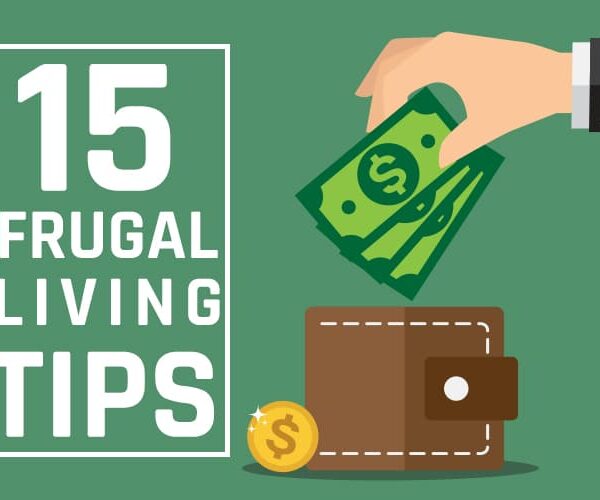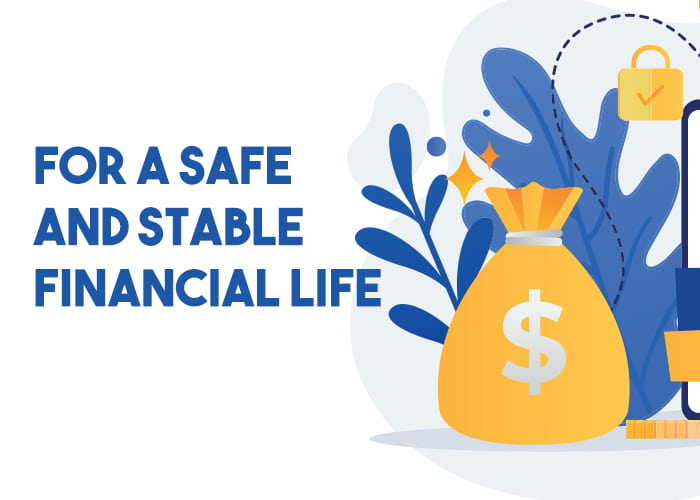This Smart Money Saving Challenges will help you save a lot of money without feeling it!
Perhaps the most important things we must do today and now, to improve the quality of our lives and reduce our stresses are the most difficult of all. It is saving money and controlling our expenses.
This always raises our income and most of these expenses are on things that we do not really need and do not add any real value to our lives.
We all suffer from our strange and unjustified behaviors towards money, and from our wallet that you always find empty in the second half of the month. We really want to change our habits and act wisely and effectively towards money, but the question remains, how to save money? we need the best money saving challenges, to change our minds
So let’s start in the 9 best money saving challenges
money saving challenge 52 weeks
What is a 52 week money saving challenge?
Here’s how money saving challenge biweekly works: You can start by saving just $1 in the first week of the challenge, then put it in a jar without thinking again.
Next week, you put $2, and the third, $3, you get the idea. At the end of the challenge, you can save over $50 a week, bringing the total amount saved just under $1,400 at the end of the year.
Not too shabby, is it? If you are wondering if a 52-week money saving challenge is right for you, read my honest assessment of one from the best money saving challenges.
Possible negatives of 52-week money saving challenge
It’s fairly easy for anyone to set aside just one dollar a week, especially with a visual reminder like a jar full of money sitting on your desktop. An abundance of 52-week money saving challenge printable is also available online, so you can manually track your progress while watching the growth of your savings.
you can download this 52 week money saving challenge printable from here:
But at the end of the challenge, it becomes difficult. Disturbing $50 a week in December can be difficult, especially when considering holiday spendings such as gifts, travel, exchange of office gifts, and holiday meals.
Some experts suggest taking the 52-week money saving challenge in the opposite direction: putting $52 in week 1, $51 in week2, etc.
That way, you’ll only end up saving just a few dollars a week during those expensive vacation months.
Additionally, since 1 dollar per week, 2 dollars per week, 3 dollars per week, etc., this amount will be nominal, it can be difficult to remember actually that you allocate this money every week with everything else that happens.
For some, it may be easier to stick to a specified amount that is provided each month or deposit it in a savings account, mutual fund (depending on your needs and preferences for that money) at the beginning of the month, and forget about it. This way, your money will actually work for you, if the 52-week money saving challenge has taught us anything, it is that all things are less.
However, there is some wisdom behind this 52-week money challenge. For one, you’re gaining momentum. For anyone working toward a financial goal, whether it is saving to buy a house, paying off debts, or continuing this dream vacation, the momentum can either lead to or break your success.
Some may argue that it is simply easier to allocate a specific amount per month. For example, to reach the same savings goal of $1,378 as in the 52-week money challenge, you’ll have to save approximately $114 per month. But it may be more difficult to find this money at the end of the month, instead of continuing.
Think about it: you have paid your monthly bills, have made any debt payments, have covered your monthly expenses, and covered an unexpected emergency. Do you really have $ 114 left to put aside? Suddenly, a few dollars a week seems more actionable than more than $ 100 at the end of the month when the cash is tight.
Last thoughts about 52 week money challenge
While a 52-week money challenge may not work for everyone (and may not be the best financial option, considering that your money just sits in a jar, does not make a profit), we can all agree on one thing: saving money is a good thing. Getting started is half the battle. Adhering to the savings plan will put you on the path to financial success.
For those looking to fund an emergency or just start saving, a 52-week money challenge might be a great option. After all, these visual reminders can be powerful rescue signals.
But it is not the only option, and you should conduct your research on a practical money-saving challenge when initiating the savings plan, to ensure that you choose the plan that suits you.
Monthly money saving challenge
As for the money saving challenge monthly, all people have to do is an automatic deposit of $115 a month for a special savings account. If you encounter problems in increasing spending, you can try the “envelope money saving challenge”, as you use a specific amount of money for most of the spending. The automatic savings setup is the easiest and most effective way to save money and put extra money out of sight.
Automatic saving means that there is a process of keeping at regular intervals, whether monthly, weekly or daily saving and here it should be emphasized that the goal is a commitment, regardless of the amount, the fact that you save more successfully when you set a fixed-term goal and may start with a very small amount.
Daily money saving challenge
- A smart way will help you in practical money saving challenge daily without feeling it!
- Stop buying your daily coffee, buy a Thermo mug and make your coffee at home every day before going to work.
- Prepare breakfast or food at home and take it with you instead of buying food from outside. This will save a lot of money and will maintain your health as well.
- Write what you want to buy on paper even if you go shopping, do not leave yourself to random purchase decisions.
- Clean your car and only clean it in the supply stations once a month.
- Always ask about the offers of fashion stores and supermarkets to buy your needs according to them.
- To save gasoline, use your friend to get to work in case you live in one place and go the same way.
- If possible, use public transportation or the metro in some Days instead of driving every day.
- Invest your money in the equipment that will be saved You need a lot of cash in the future such as steam iron, a coffee machine, etc
- Always try to control Internet packages and monthly phone calls by making them prepaid instead of invoicing.
- Avoid carrying a prepaid credit card With you all the time. Leave it at home and use it only in times of necessity.
- Subscribe to the points collection cards provided by most shops, especially from the areas that you buy a lot from. You can then take advantage of these points to buy your needs.
- On birthdays, you can resort to symbolic or moral gifts or prepare them yourself at home instead of buying expensive items.
- Reduce your average frequency for restaurants and cinemas per month
- Think about meeting with your friends at home for a different evening. *Drink lots of water! Water is an essential ingredient to give you a lasting sense of fullness, so you don’t have to spend your money on soft drinks, soda, energy drinks, etc. It will also avoid many diseases in the future.
- Stop smoking!
- Avoid going shopping in times of stress or sadness! In other words, try to avoid emotional buying.
- Avoid going too far from the shopping malls.
- Always set a special budget for shopping, another for transportation, and so on, and try to stick to it and not skip it every month. Reward yourself if you succeed in this Daily money saving challenge by buying a gift for you.
- Instead of always buying your clothes from the most famous clothing brands, find high-quality local alternatives and invest your money in them. * This advice is especially for girls: Learn online how to makeup and new ideas for hairstyles yourself makeup and instead of going to beauty salons.
- Learn how to make natural masks at home and make them yourself instead of paying money on manufactured skin cleaning masks.
- Instead of buying expensive skin care products, go to natural alternatives like natural materials.
- Prepare a quick homemade food to take with you always on your travels. * Avoid the annual subscription to the gym as long as you are not sure of the obligation to go to it. If traveling abroad, be sure to book your ticket one or two months before the date of travel, as tickets are usually cheaper compared to their prices if they are booked one or two days before the date.
- Use free communication tools instead of international calls whenever you have the opportunity.
- Find an honest person and save your money with him.
- The 50/20/30 Budget Rule
This rule from Smart money saving challenges is to those who want to control their expenses but do not know where to hold the thread, and where to start and how? The 50/30/20 plan is the best answer to the matter and the best way to start controlling expenses and savings.
It is also easy to remember and very effective in setting a budget for each of the areas of life and for the necessary expenses and to solve the problem of savings.
- 50% for essentials: These are the necessary and irreplaceable expenses (rent, food, electricity bill, …)
- 30% of needs: the expenses are the lowest level of necessities, but they are important (such as clothes, fast food, phone charging, …)
- 20% saving money: (the emergency fund, such as disease,or something like that. Or for some purpose, such as setting up a business)
This simple financial system is very suitable for beginners and experts alike, you can develop a more complex savings system or leave it like this simple and more effective.
Wallet of Expenses
One of the best ways to control expenses and the obligation to save money. The more you take your salary, allocate a wallet in which to set a specific budget for your expenses (of course with little left to save) and stick to that budget that you set for yourself. And if it happened and the wallet was empty, wait for the next salary and fill it again, for sure, if the circumstance is not urgent.
Think if you took a loan or bought a car that pays in parts. Then you will have to spend up to the remainder of your deficient salary. So why do not you commit to a specific budget that is less than your voluntary income from you and not compulsion? Perhaps you could buy the car in one payment and without parts.
Control your weaknesses
Effective control of your expenses lies in monitoring yourself, discovering your weaknesses, and then being able to commit. Among the weaknesses prevalent regarding the inability to control the expenses is usually such as fast food, clothing purchase, continuous shopping and other desires that make our wallets are completely empty. Therefore, identify your weaknesses and desires carefully and try to control the leak. Thus, you will become more aware of the obligation to control your budget and not to fall into the trap of desires under any circumstances. This method will help you become more disciplined and control yourself, this is the most important in this ” 9 best money saving challenges”
No spending challenge
The biggest problem that many people fall into is that they have, over the years, acquired negative spending habits that are difficult to leave behind. And to leave those negative habits sometimes need to push yourself to the extreme to only prove to yourself that you can do the thing, you can control yourself and your expenses.
The way is to set a challenge to yourself by not spending at a specific time that you choose according to your ability and circumstances. Whatever day, week or month, try to spend only on simple essentials.
You will be surprised after a period of changing your method and your attitude towards spending and from the bank balance. Expenses can only be controlled with restraint.
you can read this detailed article about how to crush the no spend challenge, here
20-4-10 rule, best money saving challenges
When buying a car in payments, we recommend that you use the 20-4-10 rule. The immediate payment must be at least 20% of the cost of the car, and the redemption period does not exceed four years, nor should the monthly car costs of fuel, maintenance, etc. otherwise exceed 10% of your monthly income.
By following this rule, you will not be mistaken for buying a car that exceeds your capabilities and income level.
There is also another general rule about acquiring cars is that the value of the car does not exceed 50% of your annual income. That is, if your annual income is $ 20,000, the car must not exceed $ 10,000.
The rule of Save more tomorrow or wait for tomorrow
This rule is designed for objective evaluation if the thing you intend to buy will make you happier and really improve the quality of your life. The biggest scourge of spending money and controlling the budget lies in the motivation to buy. So the next time you intend to buy something, set yourself up and wait 24 hours. And if you still want that thing after that period, it might be really interesting. In most cases, you will completely forget it, proving that it was not worth your money.
The 30 day rule: How To Save More Money
This rule is an extension of the “save more tomorrow” rule and is used for large purchases, such as a new car, home, the latest technology updates, and other relatively expensive things. This type of purchase has a huge impact on your life. If you really need a new car, you will still feel the same need for you a month from now.
This rule will help you to objectively judge your needs more precisely.
This was a set of 9 best money saving challenges and rules for controlling expenditures and saving money.
Share with me in the comments which way seems most appropriate and practical. And if you have anything to add to the matter, do not skimp on me with a comment.
About the Author
Rebecca Ellene
Hi, My name is Rebecca! I am a 36-year-old, mom, stay-at-home, and a Blogger. I share info and experience on how to simplify your finances. With my useful tips and easy plans, you too can make and save money from home. My goal is to help you live the big life on a small budget, save money, make money from home and online so you can achieve financial freedom. Join my journey!
View All Articles



